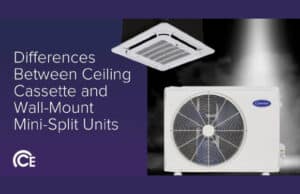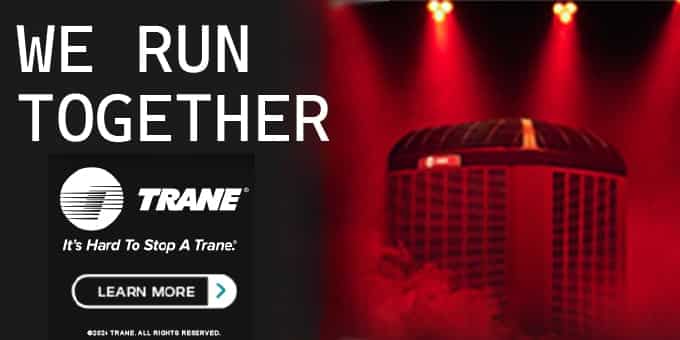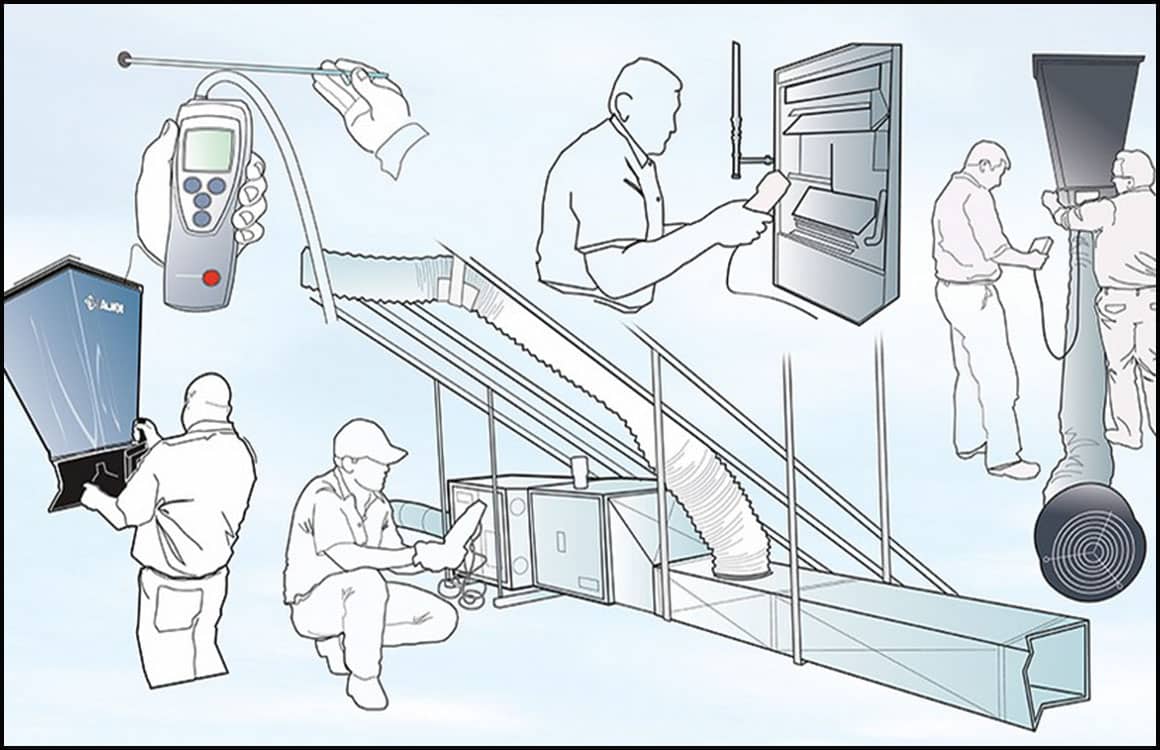 Reprinted from CE HVAC News, November 26, 2024 Edition
Reprinted from CE HVAC News, November 26, 2024 Edition
Ductless mini-split systems can be a great way to add heating and/or cooling to a space without running complicated and costly ductwork. Two of the most popular types of mini-split systems are ceiling cassettes and wall mounts, both of which vary in the difficulty of installation and the location of the indoor air handler(s).
As a heating and cooling professional, it’s important for you to understand the similarities and differences between the ceiling cassette and wall-mount mini-split unit; this way, you can ensure that your clients are properly informed and can make the right decision for their specific needs.
What is a Mini-Split Ceiling Cassette?
A mini-split ceiling cassette is a ductless system where the air handler is installed directly on the ceiling. From there, refrigerant and other supply lines are run through the ceiling or attic space to the outdoor unit.. To the naked eye, these ceiling-mounted air handlers look almost identical to a “traditional” air vent that you would see in a home with a ducted HVAC system. Our newest addition, the one-way ceiling cassette is mounted in between ceiling joists on 16” centers.
What is a Wall-Mount System?
With a wall-mount system, an air handler is installed directly on an interior wall. The refrigerant and other supply lines run through the wall, outside the home and to the outdoor unit. When most people think of a ductless system, this is the setup they typically envision because this is the most common one.
Differences Between a Ceiling Cassette and Wall-Mount Mini Split
The main difference between a ceiling cassette and a wall-mount mini split is the location of the air handler(s). With a ceiling cassette, air handlers are mounted directly onto the ceiling — whereas wall-mount mini splits involve installing air handlers on interior walls within a home or building.
In addition to the differences in air handler location, there are some other notable differences to be aware of between these two types of ductless systems. In general, ceiling cassettes tend to deliver more consistent and uniform air distribution throughout the space. This is because the air handler can be mounted on the ceiling at the center of the room, which typically cannot be done with a wall-mounted cassette.
On the other hand, ceiling cassettes can also be more complex and cumbersome to install because they require attic space to run supply lines (in the case of a 4-way ceiling cassette, the 1- way utilizes the joist space for refrigerant lines) On top of the need for HVAC professionals to physically run the lines in a confined attic space or in the joist in the case of the 1-way cassette, this can make installation more complicated. As a result, these ductless systems are usually more expensive to install than wall-mounted units.
Because they are mounted flush with the ceiling, they tend to be much more discrete. This may make the additional cost worth it to homeowners who don’t want large and cumbersome air handlers on every wall in the home. Ceiling units may make more sense for larger and more open areas where there isn’t a lot of wall space to work with.
The new one-way ceiling cassette is specifically designed for residential applications. It fits between ceiling joists on 16” centers and can be installed in add-on replacement as well as new construction applications. The connections are accessed from either below the unit or on the side that is accessible from inside the joist.
On the other hand, wall-mounted mini splits tend to be easier to install because lines can be easily run through an exterior wall and to an outdoor space . unit. This makes them an ideal option for situations where attic space may not be available, or clients simply want to cut down on installation costs.
Wall-mount mini-split systems are more noticeable by their very nature because they are installed directly on interior walls. However, it is sometimes possible to disguise air handlers or make them less noticeable for clients worried about aesthetics.
Which Option is Best For Your Client?
Both ceiling cassettes and wall-mount mini-split units have unique advantages and potential drawbacks. So, how can you help your client decide which option is right for them?
Ultimately, it all boils down to the space available within the home, the client’s budget and preferences. For clients prioritizing a sleek and seamless look the added cost of a ceiling cassette may be worth it. Otherwise, for homeowners looking for the most cost-effective option that will provide the quickest and easiest installation, a wall-mounted unit may make perfect sense. The same applies to homes where access to a ceiling space may not be available to run refrigerant and other supply lines to the outside of the home.
By explaining the differences between mini-split ceiling cassettes and wall-mount units to your clients, you can empower them to make the right decisions for their needs.
Shop Ductless Equipment at CE Today
With ductless mini-split systems becoming increasingly popular across the United States, HVAC professionals who want to keep up with the latest innovations should educate themselves on adequately installing and servicing this kind of equipment.
If you’re looking for a supplier that you can rely on for all your ductless tools, parts and equipment needs, CE has you covered. Here, you’ll find ductless mini-split systems and accessories from the industry’s most reputable brands at competitive prices and unrivaled customer support when needed.Explore our selection of ductless equipment to get started, including ceiling cassettes and wall-mounted mini-split systems. Feel free to reach out to our knowledgeable team if you need help placing an order or have questions about our offerings.
By Katie Conigliaro

















